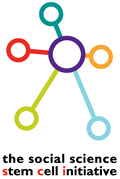Haematopoietic Stem Cells: The Dynamics Of Expectations In Innovation
Abstract
The project will focus on haematopoietic stem cells (HSCs) for the treatment of cancer and now other conditions. HSCs reside in the bone marrow and are the immortal progenitors of many tissues in the blood and immune system. Unlike all other stem cell therapies, only a few of which have even been experimentally tested, HSCs have been routinely used as an alternative to bone marrow transplantation since the late 1990s. Novel applications of HSCs are currently being developed for the treatment of other conditions, such as stroke. Their adoption may therefore represent a paradigm for emerging stem cell technologies. Despite the success of HSCs as an important cancer therapy, there has been very little commercial exploitation of this technology. There was an unsuccessful, and now largely forgotten, 'first wave' of industrial interest in HSC technology in the US in the mid 1990s. However, in recent years there has been renewed interest in the commercial potential of the field. The main research question will therefore be: how has haematopoietic stem cell technology been developed as a therapy, to what extent has it been commercially exploited, and what are the prospects for its future development? The project will:
- Explore how HSC technology has entered the clinic, the creation of research networks, the expectations that shaped clinical development, and the main factors influencing its diffusion
- Analyse the industrial development of HSC technology, firm strategies and the expectations that guided them, and the key issues facing attempts to establish commercially viable businesses
- Assess the prospects for the future development of HSC technology and identify key barriers to its further diffusion
- Recommend public policies to stimulate further clinical development and diffusion, improve the competitiveness of the UK stem cells industry
- Examine the utility of using the 'dynamics of expectations' methodology for technology assessment and policy-making.
Contacts
Dr Paul Martin
Dr Nik Brown
Dr Alison Kraft
Prof Philip Bath
Prof Joan Fujimura
Prof Arie Rip
Outputs
Poster
http://www.york.ac.uk/res/sci/posters/martinproject.pdf
Publications
Nik Brown & Alison Kraft Blood Ties: Banking the Stem Cell Promise Technology Analysis & Strategic Management Vol. 18, Nos. 3/4, 313–327, July–September 2006.
Abstract below. Full document here - pdf
Presentations
Banking the Stem Cell Promise Technology Analysis & Strategic Management
This paper explores the banking of cord blood stem cells by new parents, a growing phenomenon that raises a number of questions for scholars interested in the role of expectations in innovation. In particular, we focus on the relationships between imagination and materiality, the way in which today’s expectations of a future stem cell revolution have become embodied (materialised) in an ever growing number of deposited cord blood samples. In addition, the case raises interesting questions about agency and authorship in the construction of the stem cell dream and the production of new ‘blood ties’—new future-oriented parental duties and responsibilities. Here, parents are encouraged to think themselves into a future in which their newborns are ‘at risk’, but also a future populated by an innovative range of regenerative medical treatments.
Events
Future development of haematopoietic stem cell (HSC) science and technology
Wellcome Trust Conference Centre, London. Monday 29 October 2007.
The workshop will focus on the current development and future expectations about how research in haematopoietic stem cells will be translated into commercial products and clinical applications.
Contact Paul Martin or Richard Tutton for further details
